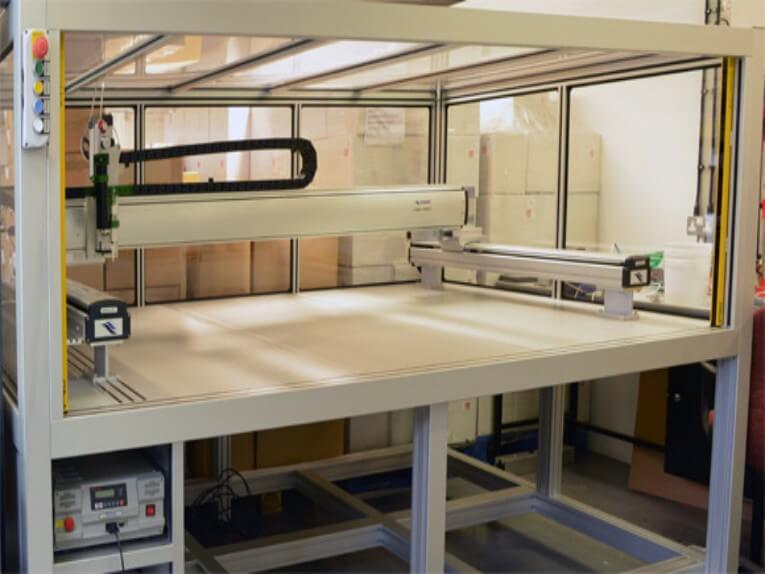There are many different types of pick and place robots, such as:
Cartesian Robots:
Cartesian robots move items in multiple planes, using X, Y, and Z coordinates (known as cartesian coordinates).
Fast Pick Robots:
Fast pick robots pick items at a very high speed, which is why there are used in high volume applications. These robots are capable of moving about 300 items per hour.
Robotic Arms:
Robotic arms are the simplest and most common type of pick and place robots. As described earlier, they are used as 5-axis and 6-axis robotic arm. 6-axis robotic arm works similar to cartesian robots but has lower positioning accuracy compared to delta robots.
Delta Robots:
Delta robots can pick items and place them in predefined assembly patterns or groups. These robots can be equipped with sensors or vision systems to select items based on different colors or sizes.
Collaborative Robots (Cobot):
Collaborative robots are named so because they work in collaboration with humans. Their purpose is to guide humans to the picking location or the desired location. These robots can create an optimal route to minimize transporting time.
What are the Advantages of a Pick and Place Robot?
Pick and place robots offer several advantages as compared to using human workers for the same purpose. Some of these advantages are:
Speed:
The speed of operation is one of the major reasons in favor of pick and place robots. These machines can lift a lot of objects at the same time that it would take a human worker to lift one object.
Productivity:
Due to a higher speed of operation, a pick and place robot has higher productivity than human counterpart. This is why modern manufacturing environments are able to roll out a higher number of products, to increase production rates.
Uninterrupted Production:
Human workers require breaks, which can lead to interruptions in the production line. Interruptions also occur during the change of shift of workers. However, robots do not require breaks and can work all day and night.
Consistency:
Human labor always brings in the factor of human error. However, a pick and place robot will work on exact mathematical principles, so there are no errors and the end result is a consistent operation.
Safety:
Lifting objects involves the risk factor of the object falling down on human workers and causing injuries. However, robots have no such risk, leading to higher safety in the workplace.
Return on Investment:
Pick and place robots enables companies to minimize running costs by incurring a small initial investment. There are no salaries and no benefits to pay. This results in a higher return on investment in the manufacturing processes.
Throughput:
Pick and place robots result in a higher throughput as they can move a lot of objects in a given time. As mentioned earlier, fast pick robots are capable of moving items at the rate of 300 skus per hour.
Applications of Pick and Place Robots
Even as food packaging industrial robots, pick and place robots serve several different applications. These applications include:
Assembly Applications:
In assembly processes, pick and place robots can gather multiple parts from multiple locations, and assemble them at one place. Complex work in electronic environments is done using these types of pick and place robots.
Packaging Applications:
As a packaging utility, pick and place robot grab the food items and place them in a packaging container. To load the items into a packaging container, they can even be picked from a conveyor belt.
Bin Picking Applications:
In bin picking applications, pick and place robots are capable of picking up a particular item from a bin. These pick and place robots have advanced vision systems that enable them to accurately identify the required item, an application required in bin picking.
Inspection and Quality Controls:
Inspection and quality control pick and place robots identify each item to find out if it meets the quality control protocol of the manufacturer. If the items fail, the robot can remove the item from the production line.
Part Sorting:
Part sorting robots can sort different objects based on their shape or the information provided on the object itself. These can be used to segregate parcels or for similar applications.
Medical Applications:
Pick and place robots are also finding their applications in the medical sector. They not only help in sorting the medical inventory but can even assist in complex surgeries.
Post time: Apr-24-2023








